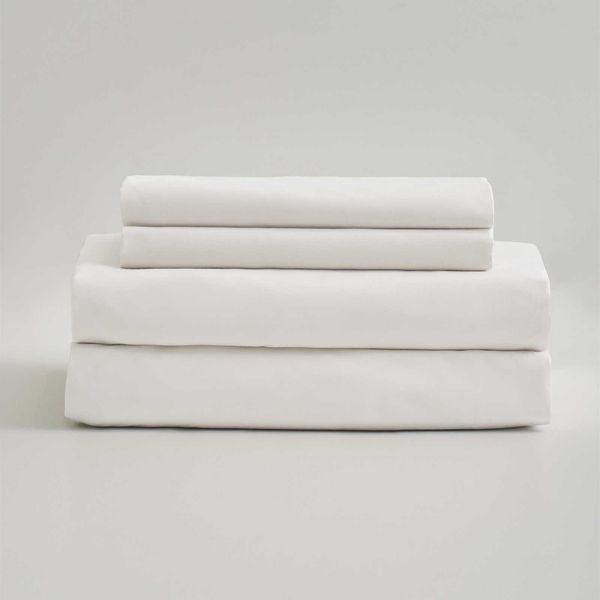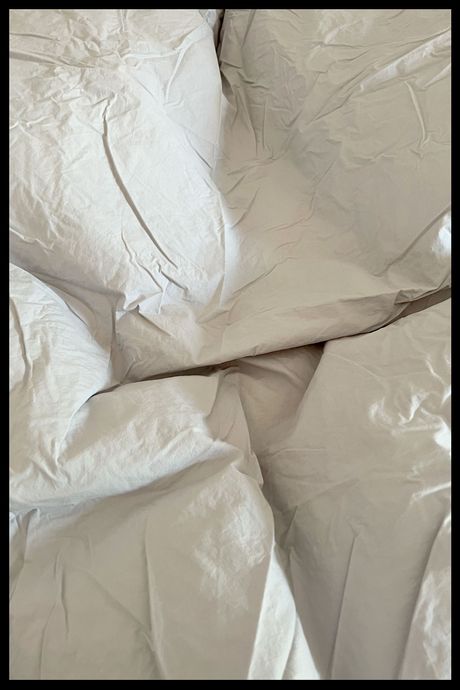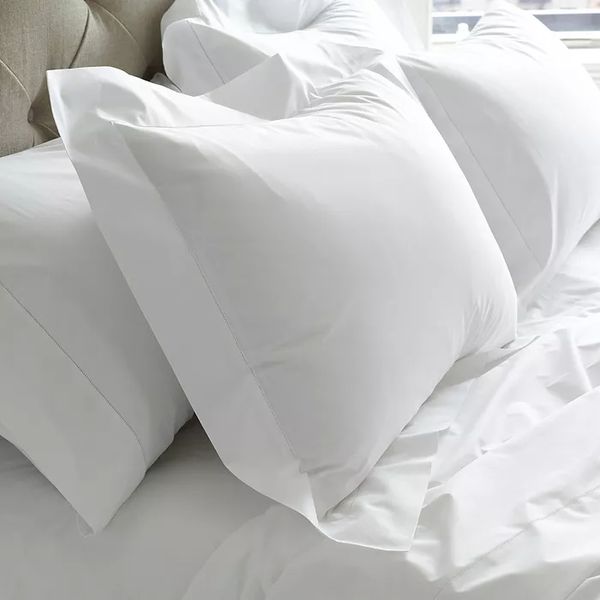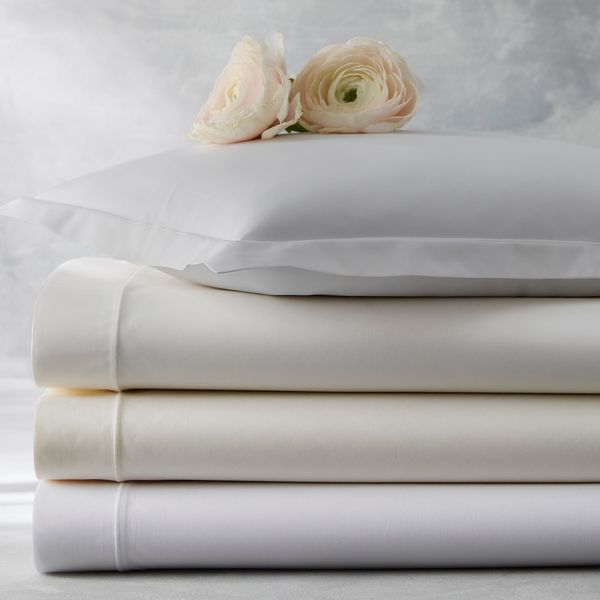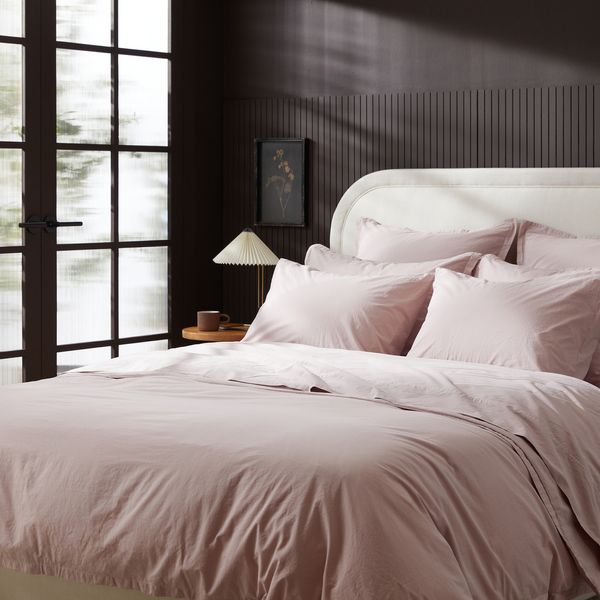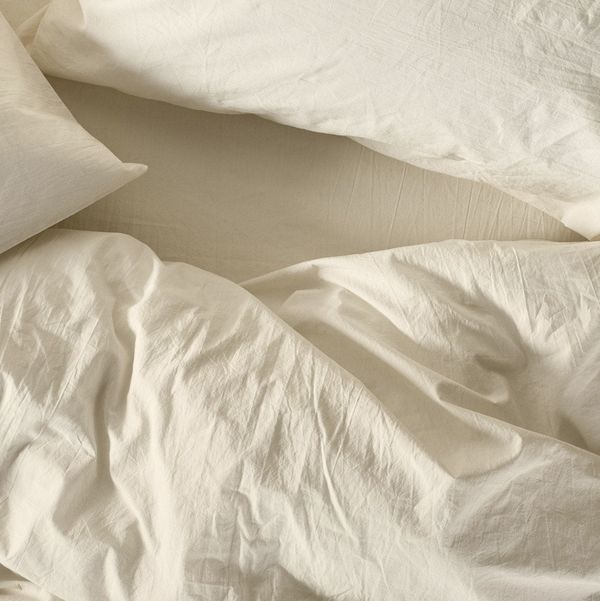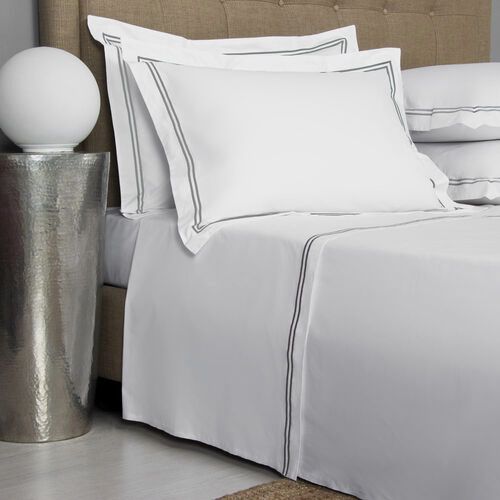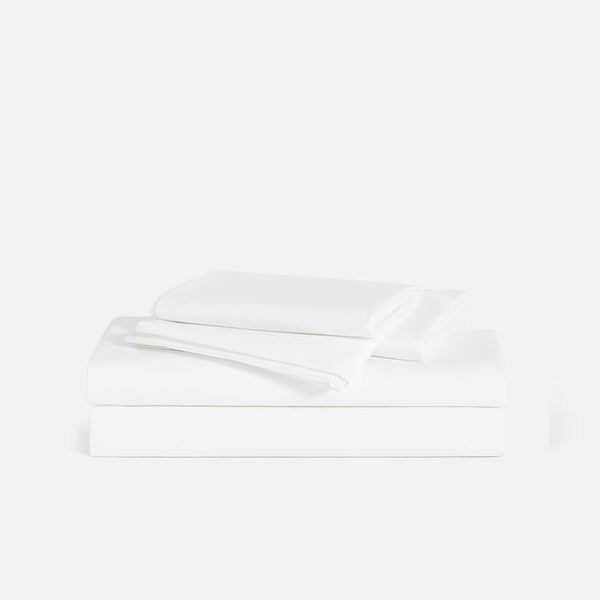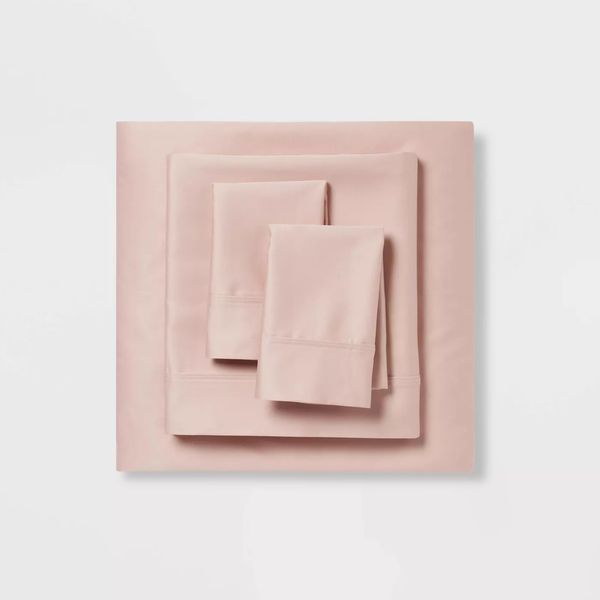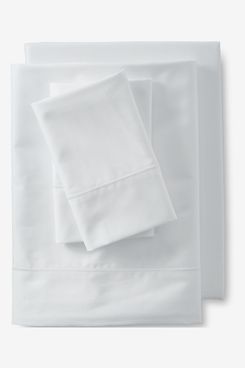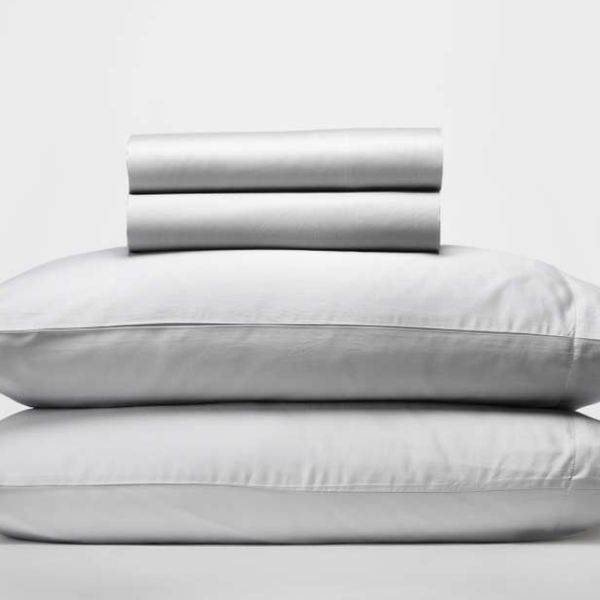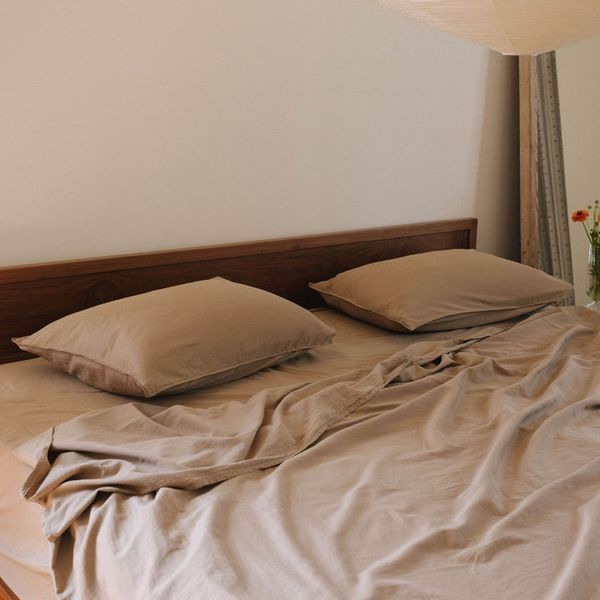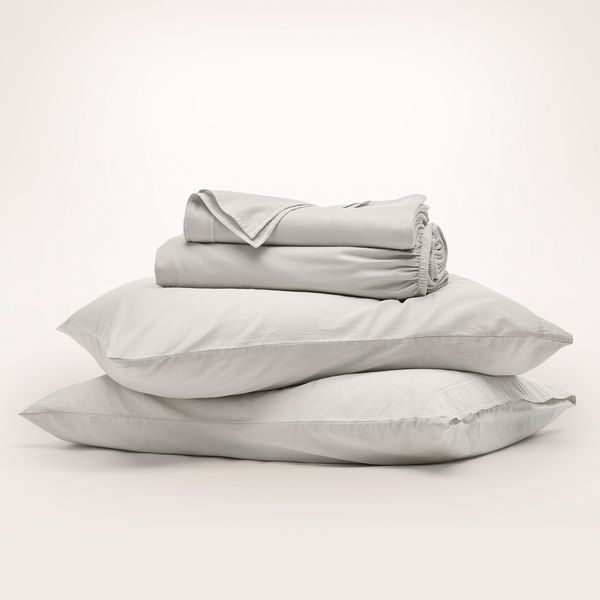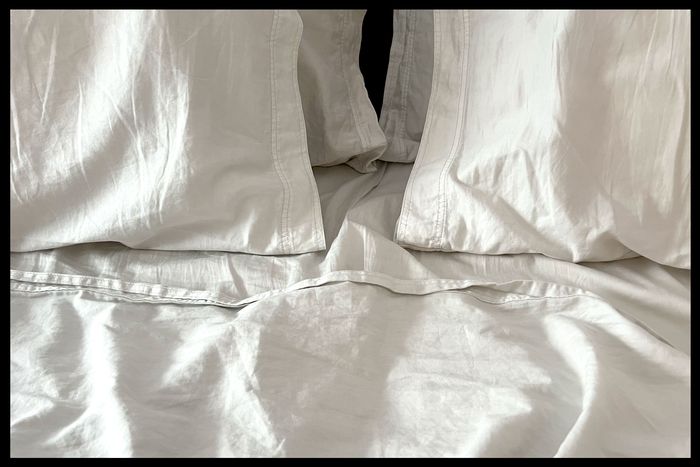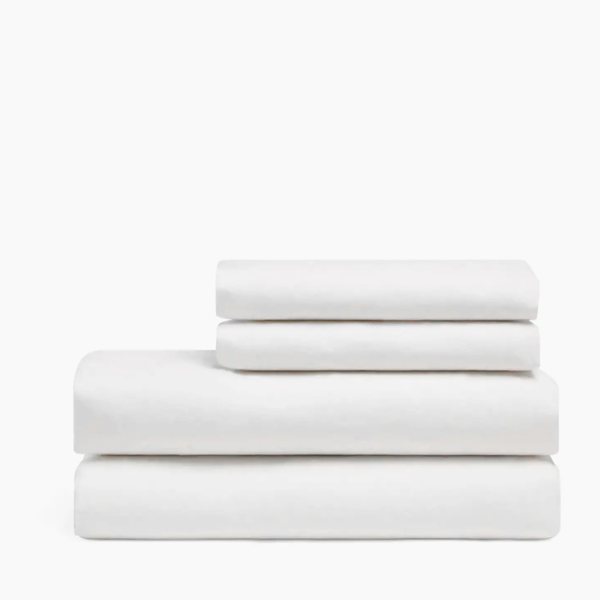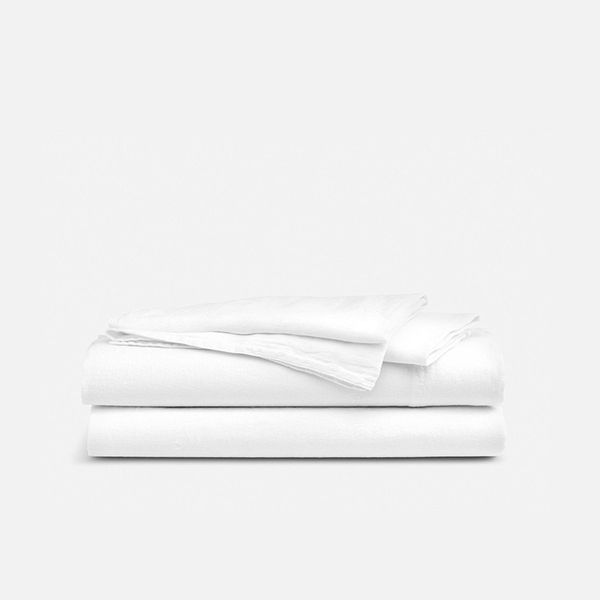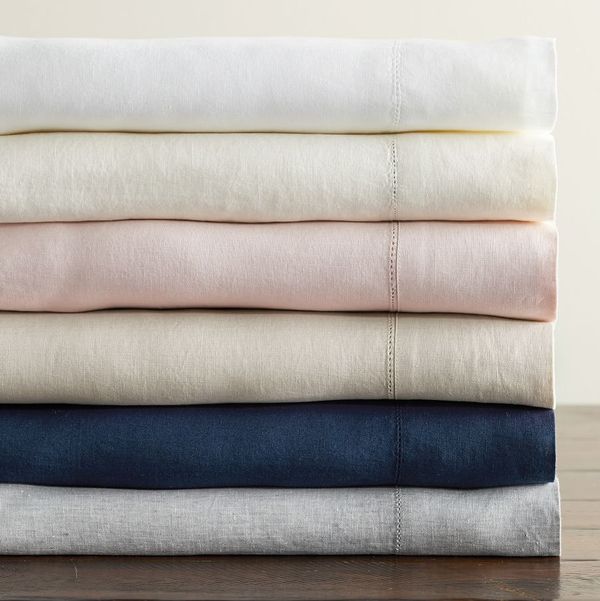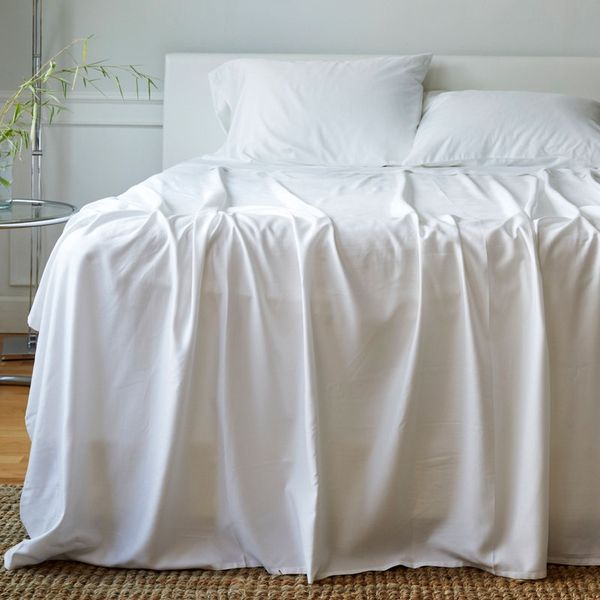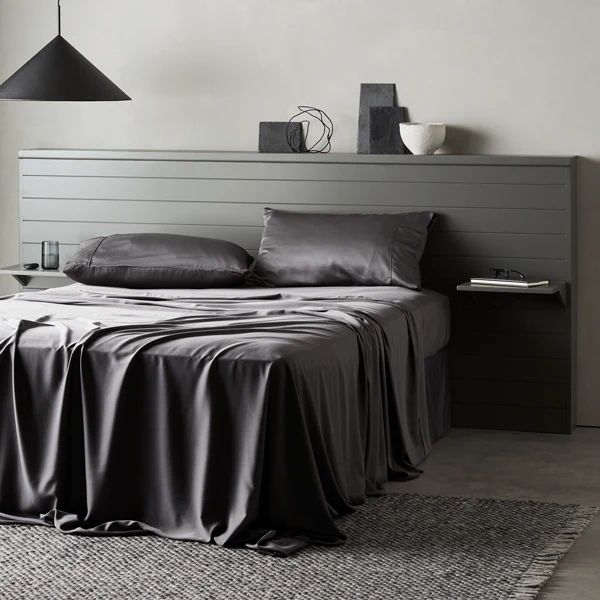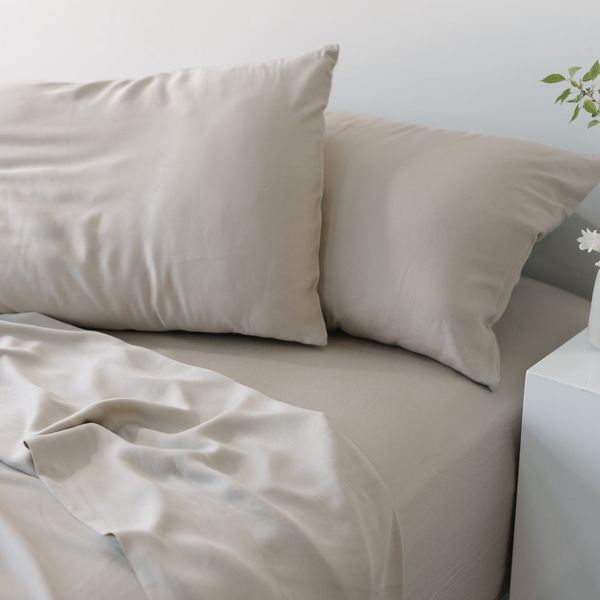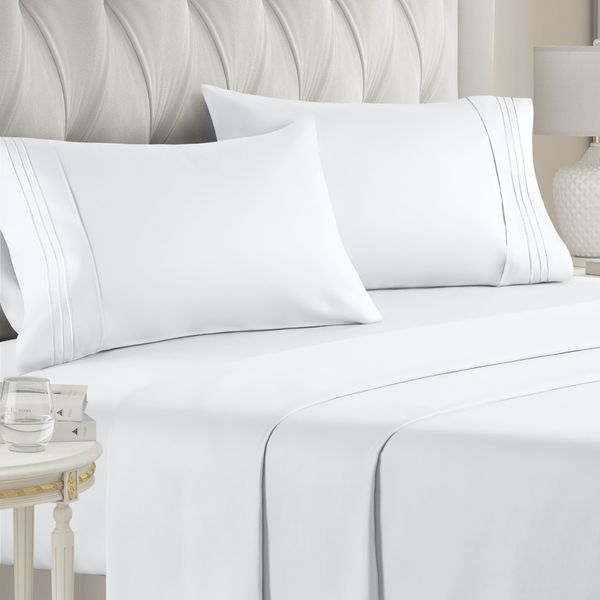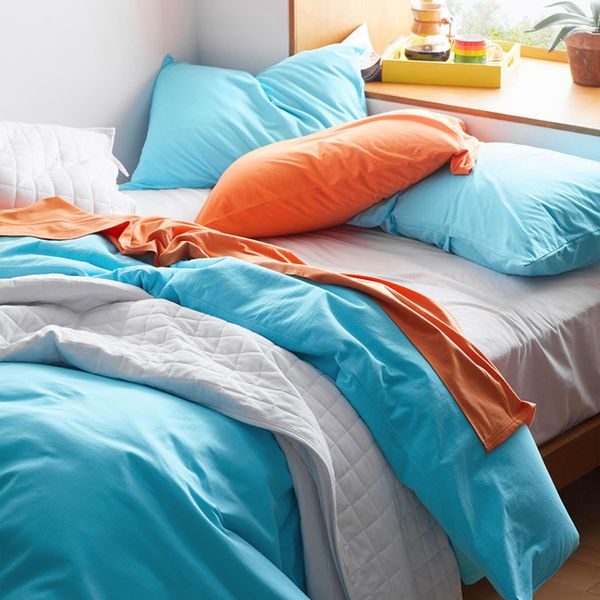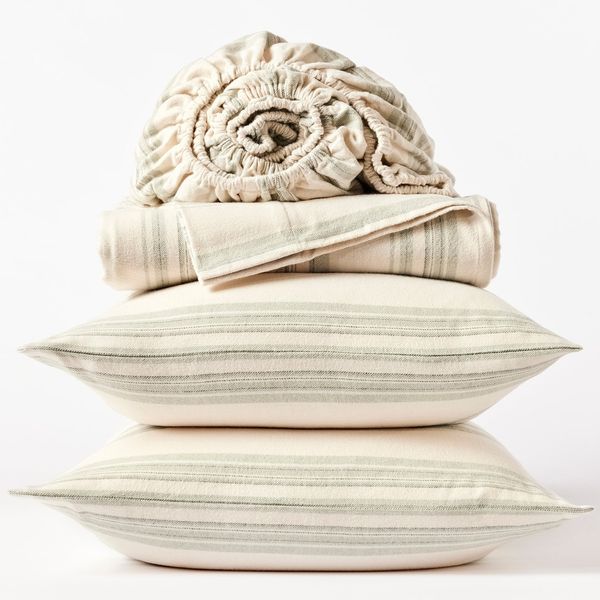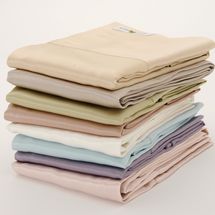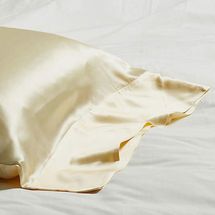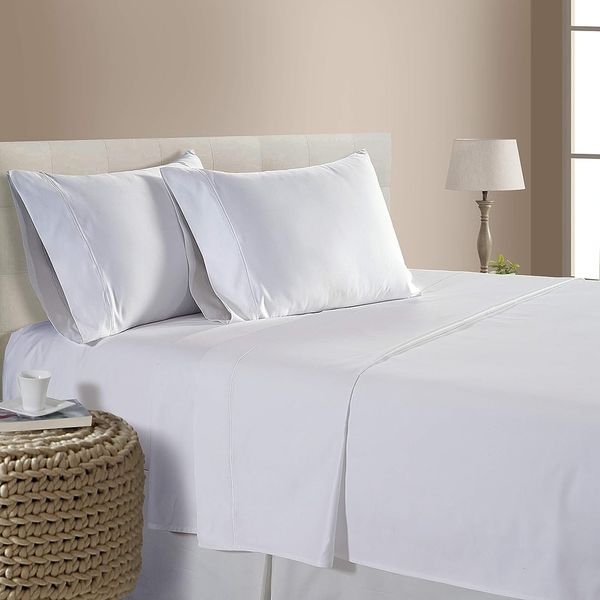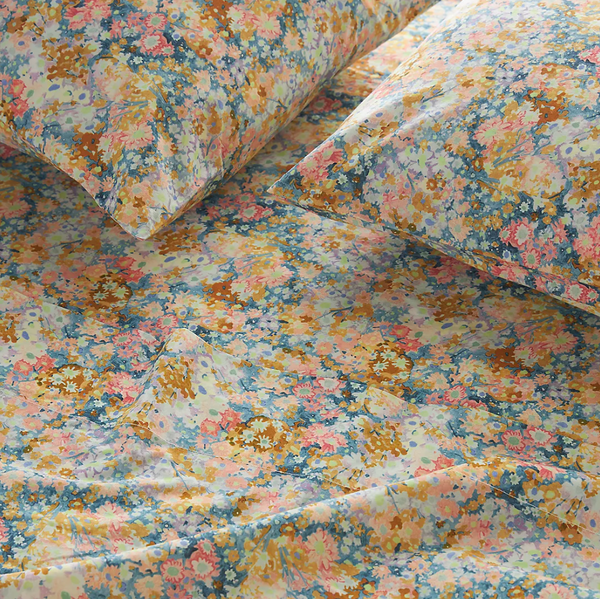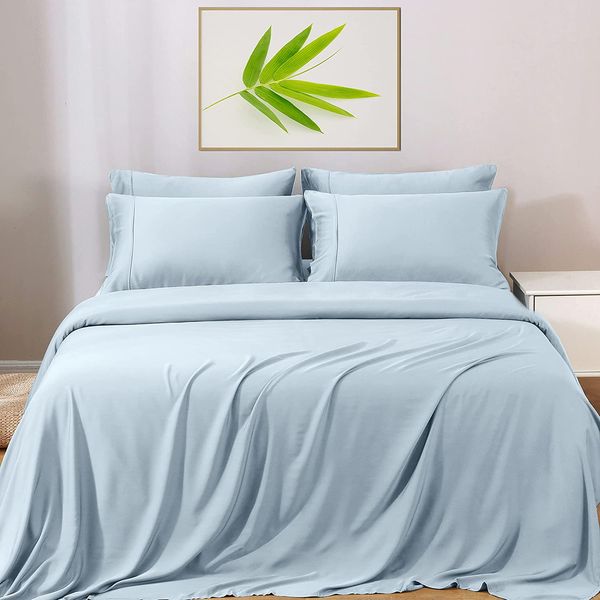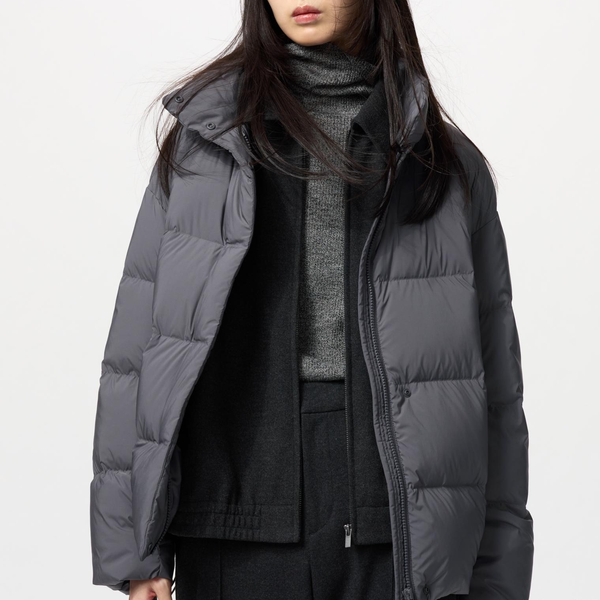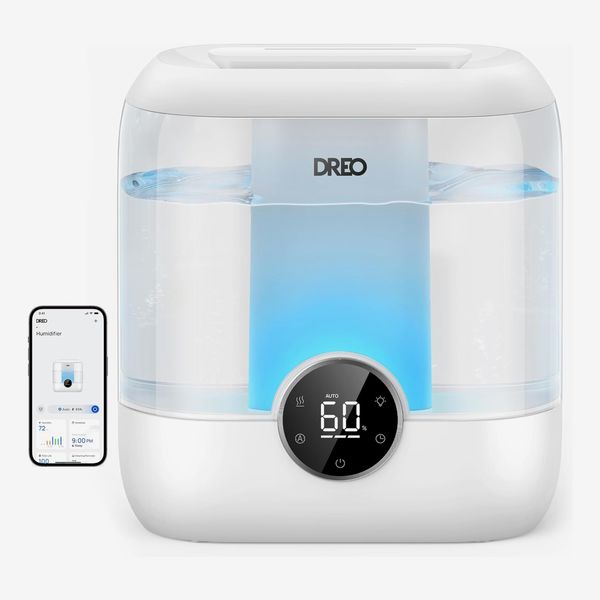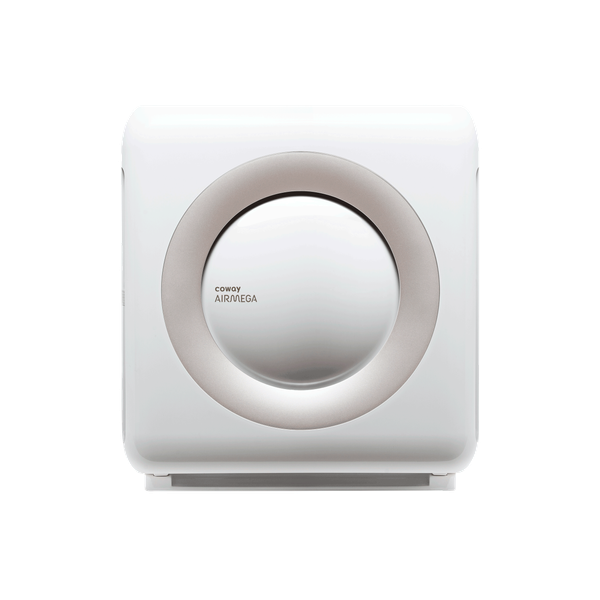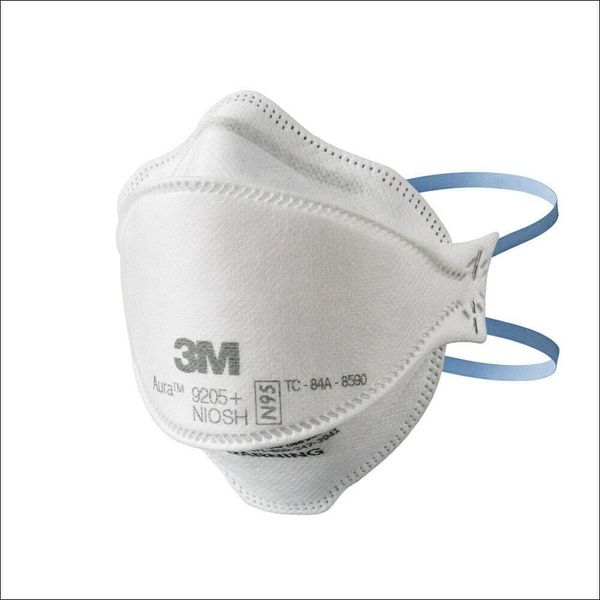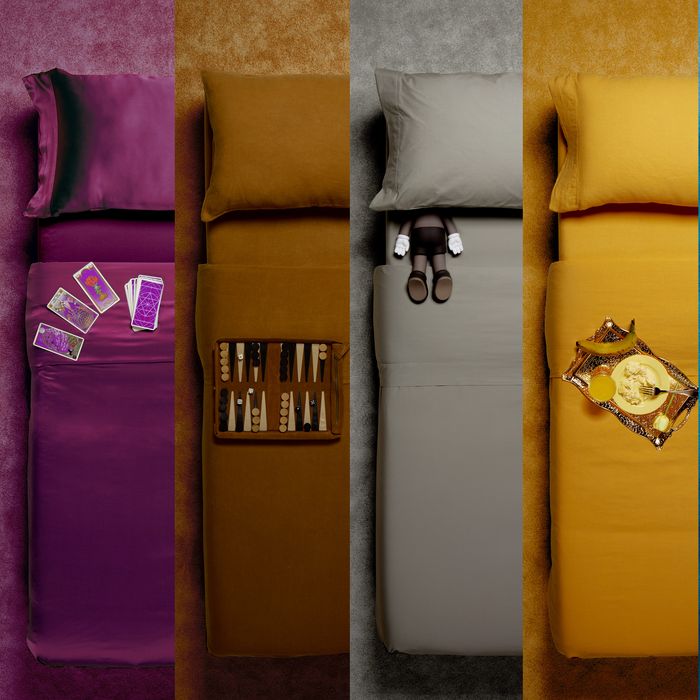
In this article
With so many bedding start-ups promising premium-quality sheets for less, it can be hard to keep everything straight, especially now that it feels like every home company is getting in the bedding game, too. There’s also more fabric options to choose from than ever before. Cotton will always be No. 1 in my book, but linen and naturally derived fibers like rayon (from bamboo or eucalyptus) are gaining in popularity, which means you can find bedding that fits your aesthetic and your sleeping preferences.
Over the years, I’ve spent many hours in bed testing (a.k.a. sleeping in) sheets in a range of styles and fabrics, including crisp cotton percale and silky sateen. (See my in-depth explainer on the difference between these two.) I’ve also spoken with experts — 33 of them, including designers, tastemakers, and a couple of The Strategist’s own staffers — about their favorites. Here’s a list of everything I’ve tested plus our experts’ own recommendations on the best bedsheets to buy, from classic white Egyptian cotton to cooling bamboo to completely bespoke sets.
Most of the options on this list are sold in sets that come with a fitted sheet, a flat sheet, and two pillowcases, but I’ve noted if pieces are sold separately. And all prices listed are for queen-size sheets unless otherwise specified.
Update on January 6, 2025: Added Coyuchi flannel sheets; updated prices and checked stock for all other products.
What we’re looking for
Material
The first things you want to think about are what your sheets are made of and, if applicable, how they’re woven. The most popular sheets fall into a few major categories of material, with cotton being the most common. Within cotton, you’ll see percale and sateen sheets, terms that refer to the weave of the cotton, which determines the feel of the bedding. Then there’s linen (which is made of flax), bamboo and other alternative fibers, lyocell, jersey, and silk. The material you choose will dictate whether the bedding is cooling, durable, or easy to maintain. Below, a breakdown of the materials:
Cotton percale: Cotton percale is made of a tight one-over-one-under plain weave that’s crisp, lightweight, and matte in appearance (kind of like your favorite white button-up shirt). It’s highly breathable, too, making it a great choice for those who sleep hot, and it’s usually made from long-staple cotton, which has longer fibers and is thus more durable and higher quality than cotton made from shorter fibers (Egyptian and Pima cotton are made from long-staple cotton).
Cotton sateen: Sateen’s three-over-one weave is looser, resulting in a denser feel that drapes well and has a silky sheen. It’s heavier than percale and will sleep slightly warmer.
A note about thread count, which applies only to cotton sheets: Thread count refers to the number of horizontal and vertical threads in a square inch of fabric. The general thinking goes that the higher the thread count, the nicer the sheets, though that isn’t necessarily true. A good thread-count range to look for in percale and sateen sheets is between 200 and 600, but you should check the quality of the fibers. Long-staple Egyptian cotton is considered some of the best in the world. For a more in-depth explainer on thread count, read my story here.
Linen: Linen is made from the flax plant and has a rougher texture than cotton, giving that rumpled, lived-in look that can be quite appealing. It’s more durable than cotton, too, and gets softer with each use. The looser weave is breathable, which makes linen another great option for sweaty sleepers.
Jersey: Another popular cotton bedding type is jersey, which you may associate with college dorms because of its accessible price point and the way it feels like your favorite worn-in T-shirt (and is just as low-maintenance). Jersey fabric is knit instead of woven, often from cotton or cotton blended with synthetic fibers, giving it a soft, stretchy, cozy hand feel.
Alternative fibers: A whole crop of sheets is made from alternative fibers — some of which are naturally derived — including rayon, which is made from regenerated cellulose, a.k.a. wood pulp, from either bamboo or eucalyptus; Lyocell, which goes by the brand name Tencel; and microfiber. Lyocell and bamboo are known to be light, crisp, and breathable, making them yet another option for warmer sleepers. (Rayon also goes by viscose, and the two terms are used interchangeably depending on the manufacturer, as you’ll see below).
Silk: This is the most expensive bedding out there and the most finicky to maintain. Made from the cocoons of silkworms, silk is lustrous in feel and luxurious to behold, with a beautiful drape, good temperature regulation, and a smooth, no-snag, no-frizz surface.
Color and design
Once you’ve chosen the type of bedding you like, you’ll want to consider the look of your sheets. You can go for classic hotel whites with minimal trim, luxury sheets with piping or the option to monogram, or a brand that offers a rainbow of colors.
Best sheets overall
Material: Oeko-Tex certified organic long-staple cotton percale, 270 thread count | Style: 15 colors
These percale sheets from Quince have recently risen to the top of my list. I had already anointed them the best cooling sheets for sweaty sleepers for how crisp, lightweight, and smooth they are, but I think they’re excellent as everyday sheets for average sleepers as well. They’re made with long-staple organic cotton in a 270-thread count that feels much nicer and more expensive than its $100 price tag.
What makes them ideal for those who sleep hot makes them just as great for any type of sleeper, regardless of their sleep temperature. They’re incredibly breathable, thanks to the plain weave of percale that gives it a very crispy handfeel. And as I wrote in my guide to cooling sheets, the sheets are almost paperlike in how airy they are. They have a nice matte finish that’s cool to the touch but also smooth. They’re also very durable and wash very nicely. Quince’s percale sheets are just a really solid, competitively priced set of sheets that I think will work for most sleepers. Plus, they come in 13 subdued colors and patterns, including light blue, sage, and blush.
Percale
Best percale sheets
Material: Cotton percale, long-staple Oeko-Tex cotton, 350 thread count | Style: Two colors, monogrammable
If you’re ready to dive in to a truly crispy set of percale, consider Matouk, which manufactures all of its bedding in the United States. I tested a set of the Sierra sheets, which are made of 350-thread-count, Oeko-Tex-certified long-staple cotton and have a classic hemstitch detail, and the first thing I noticed was just how nice they were — lightweight, beautiful, smooth, and cool to the touch, like the platonic ideal of high-quality, “elevated” percale. And they washed well, too.
They do cost more, as Matouk sells each piece separately, and the fitted sheet shown here cost more than the Quince set above. Matouk’s sheets are the go-to for many interior designers as well. Designer Sasha Bikoff loves that “everything’s customizable, from the color of the threading to the monogram and the ruffles,” she says. (You can monogram pillowcases, flat sheets, and duvet covers for an extra fee, and buying things piecemeal means it’s easy to mix and match styles.) While there are plenty of designs, trims, and patterns to choose from, interior designers Anne Hepfer and Elizabeth Gill recommend the timeless Sierra hemstitch sheets, which Hepfer says “are a beautiful, classic base that can pair with any bedding.”
Best Egyptian cotton percale sheets
Material: Cotton percale, Egyptian long-staple cotton, 500 thread count | Style: Satin stitch flange, eight colors
While the Frette above are also made of Egyptian cotton, the Matouk Luca Satin Stitch sheets are made with a higher thread count of 500 and feel truly luxe, making them my overall pick for best Egyptian cotton sheets. The Luca Satin Stitch has a super tight weave that gives the sheets an incredibly crispy, smooth feel. They’re among the most lightweight and airy of all the percale I’ve tried — but, I should note, also the most expensive, with a fitted sheet costing $225 for a queen size. For comparison’s sake, Matouk’s Sierra sheet (above), which has a thread count of 350 and is made of non-Egyptian cotton, is slightly thicker, feels more casual, and costs a hundred dollars less. The Sierra is better for everyday living, but if you wanted to upgrade your sleep experience, splurge on the Luca. (Matouk makes an even more premium Egyptian cotton sheet, the Gatsby, which has a thread count of 1,000 and goes for $824 for a queen fitted sheet, if you really wanted to splurge.)
Best (less expensive) Egyptian cotton percale sheets
Material: Cotton percale, long-staple Oeko-Tex Egyptian cotton | Style: Nine colors
You can still find quality Egyptian cotton sheets that are more affordable, like this queen set from Parachute that costs about the same as a single piece (the fitted sheet) from Matouk’s Luca Satin Stitch line. Strategist senior editor Simone Kitchens recently started using them. “These sheets are ultrasmooth with a washed quality that manages to feel crisp and clean even up until laundry day,” she says. While her longtime favorite sheets have been Morrow’s matte sateen (see below), she wanted to try something a little more “cooling,” and these were just that: “I tend to run a little hot at night and often kick a leg out to cool down but haven’t needed to with this set.”
Best washed percale sheets
Material: Organic cotton percale | Style: 8 colors
Percale sheets can feel too crisp to some, so if you’re looking for something with a more lived-in feel that still has the weave’s signature airiness, consider Coyuchi’s Crinkled Percale sheet set. Kitchens recently tried them out and says they’re the most lightweight sheets she’s tested thus far. “They’re lighter and thinner feeling than the Quince and Parachute, but not in a flimsy way, with the softness of the Morrow Matte Sateen sheets [Editor’s note: See below],” she says. They’re made with organic cotton using a proprietary spinning and weaving process and finished with a plant-based softener that produces a rumpled effect with the “slightest ‘nub’ texture that’s still so smooth,” according to Kitchens. “It feels like a nice progression from linen. It’s so soft but still has an interesting aesthetic and an organic-feeling texture.” And, as Kitchens notes, the sheets have good airflow, making them particularly cooling.
Best hotel-style percale sheets
Material: Cotton percale, Egyptian long-staple cotton | Style: Embroidered borders in four colors
Of course, you can’t talk fancy sheets without mentioning Frette, which was recommended by two of our experts. It comes as no surprise that Frette’s happen to be the most recommended sheets by hotel insiders. Says Michael Shome, the visuals director at Architectural Digest, “My absolute favorite sheets are the hotel classic from Frette, which are kind of like the fantasy version of Upper East Side hotel bed linens. They’re Italian made in this Egyptian cotton that’s just the softest and butteriest fabric to laze around in. I love the chic and simple double-line embroidery, too.” Interior designer Ariel Okin turns to Frette sheets when she’s looking for something classic. According to Frette’s website, its percale sheets have a thread count between 200 and 240.
Sateen
Best sateen sheets
Material: Cotton sateen, Oeko-Tex certified long-staple cotton, 480 thread count | Style: 16 colors
Thanks to their weave, sateen sheets, like this 480-thread-count Brooklinen set made of long-staple cotton, have a silkier (and more substantial) feel than percale. I’ve owned this set for four years, and they’re among the softest sheets I have and only get better with time. They’re definitely thicker and therefore sleep a little “warmer” than percale sheets, but if you’re looking for that silky (but still cottony) drape, these are a great place to start. I would say these traditional sateen sheets are better for cooler weather.
They’re also recommended by two of our experts — design historian Alessandra Wood, and interior designer Molly Schoneveld. Wood and Schoneveld agree that they’re an excellent value. “It is really hard to beat the quality of these sheets for the price,” says Schoneveld. “They feel like butter and still look and feel great after many times in the wash.” The design pros aren’t their only fans: Former Strategist writer David Notis and Michelin-starred chef Missy Robbins love Brooklinen’s Luxe sheets, which made our list of the best products to buy at Brooklinen. “I want to be super-cozy, but I don’t want to sweat to death — these have that balance,” Robbins says. For those looking for a less shiny sateen option, see below for my review of Morrow’s matte sateen sheets, which have a similar smoothness but are slightly lighter in feel and weight.
Best (less expensive) sateen sheets
Material: Cotton sateen, Oeko-Tex certified, 400 thread count | Style: 12 colors
Target’s in-house Threshold line makes some of the best, most affordable sateen sheets you can find. (They’re also a Strategist best seller.) When I tested them, I was surprised by how substantial they felt relative to their price tag. They’re also interior-designer-approved by Tavia Forbes and Monet Masters of Atlanta-based studio Forbes + Masters, who recommend them for being “great quality for a great price.” They’ve also become the go-to sheets for New York Magazine’s deputy editor Alexis Swerdloff. She has a couple of sets for her 5-year-old son’s twin bed. “Threshold sheets are just really solid sheets,” she says. “They get extremely soft after some washes, and the twin size is around $30, which feels appropriate for sheets that my son is gonna pee on a lot!” Plus, she adds, “The many times I have fallen asleep in his bed (with him, or when I just need a place to sleep), I have found them very comfortable.” The sheets come in a nice range of colors and patterns, including light blue, cream, and these blue-dotted ones, all three of which Swerdloff personally owns. Made of 100 percent cotton, the 400-thread-count sheets are wrinkle, pill, and shrink resistant for easy upkeep.
Best (Supima cotton) sateen sheets
Material: Supima cotton sateen, 400 thread count | Style: 13 colors
Here’s another sateen option with equally high endorsements — except these are made with 100 percent Supima cotton, a premium, USA-grown, extra-long staple fiber. Annie Meyers-Shyer, actress and daughter of filmmaker Nancy Meyers, recently told us about these sateen sheets from Lands’ End, which her family has used since 2018 upon encountering them at a vacation home in the Hamptons. While they’re sateen, Meyers-Shyer says they are “not really shiny, which I think is a great thing. They’re cool and warm all at once. They’re so soft, they’re so luxurious. They wash so well.” And even though the brand calls them no-iron, she still likes to iron them: “They’re crisp and they’re soft, and I would say they’re really delicious. That would be the best way to describe them.”
While they’re slightly more expensive than the Brooklinen sheets, they are always going on sale, according to Meyers-Shyer, which makes them a great option for someone who wants something luxurious — before she checked the label, she thought they were Italian made — without the hefty price tag. Other fans include Rachel Antonoff, who says they are “just as soft and lovely” as Frette sheets, and New York Magazine features editor Katy Schneider.
Best (Egyptian cotton) sateen sheets
Material: Egyptian cotton sateen | Style: Seven colors
For sateen sheets made from Egyptian cotton, consider this set from Silk and Snow, which also made our list of the best Egyptian cotton sheets. While sateen sheets are known to be heavier than percale and therefore sleep a little warmer, if they’re made with Egyptian cotton, they will feel a bit more cooling. I found these sheets to be extremely soft and lightweight and felt comfortable sleeping in them, though I will note that I am an average sleeper when it comes to temperature. They’re a favorite of Tom Ryan, head of product testing at Sleep Foundation, who described them as “very lightweight and breathable,” adding that because they’re made from durable Egyptian cotton, they’re an option “that should hold up to everyday use for several years.”
Best matte sateen sheets
Material: Matte sateen, organic Oeko-Tex cotton | Style: Six colors
I love a crisp percale sheet, but sometimes you want something a little cozier. I was intrigued by the idea of these matte sateen sheets by Morrow, one of our favorite brands for tonal bedding, and as soon as I got them, they immediately became my favorite sheets. They’re buttery like regular sateen but not shiny — instead, they’re perfectly lived in and so, so soft, and they get better with each wash. They feel a little heftier than percale while still feeling lightweight and breathable, making them ideal for all seasons. I’ve been using the sheets for two years now, and they’re always the first set I reach for no matter the season. They also feel just as durable as they did on day one. I got them in a soothing eucalyptus, but they’re available in five other muted colors that are great for mixing and matching. (There are more color options for the twin size.) Kitchens, who owns a set in terra-cotta, seconds that “these are the world’s softest sheets.” She’s also had them for about a year and agrees that they get softer over time — and, importantly, don’t pill — are great for all seasons, and never feel too hot, even in the summer.
Material: Matte sateen, organic Oeko-Tex cotton | Style: Three colors
As much as I love my Morrow sheets, this new vintage-washed set from Boll & Branch gives them a run for their money. Made from long-staple organic-cotton sateen, the sheets go through a small-batch dye-and-wash process and come out feeling incredibly soft and lived-in. Even though they’re sateen, they actually feel a little closer to percale to me. They have a slight crispness that’s very appealing and really do remind me of a favorite worn-in button-down, partly due to the hem-stitching detail on the pillowcases and the flat sheet. The hem is shorter than on other standard sheet sets, lending them a more casual, laid-back look. Compared to the Morrow, which I would say are buttery soft and a little slinkier, these are crisp, yes, and also have a more structured softness. (Though over time, they may get just as soft as the Morrow, which I’ve had for two years.) They sleep slightly cooler, too. If you generally prefer the smoothness of percale sheets, as I do, but are looking for a more relaxed feel, then I would recommend the Boll & Branch sheets.
Linen
Best linen sheets
Material: European flax | Style: 31 colors
Linen sheets, made from the natural fiber of the flax plant, are generally more expensive than cotton because of their more involved manufacturing process and durability. They’re said to get better and softer over time, too, making them a nice long-term investment. Quince’s European linen set is my best overall pick for how soft and lived-in it is right out of the box. Strategist writer Dominique Pariso is also a fan, calling them “superlight with a slightly textured weave,” like a “worn-in, gauzy linen button-down you’d throw on in the height of July heat.” Pariso, who sleeps extremely hot, also loves that they keep her cool during the winter when the heat is cranked up.
Best lightweight linen sheets
Material: Flax linen, Oeko-Tex certified | Style: 11 colors
If you’re looking to dip your toe in linen bedding, this set from Brooklinen is a great place to start. The material is gauzier than that of other linen sheets I’ve tried, making them an excellent choice for anyone chasing that summer feeling from their bedding. Former Strategist senior writer Lauren Levy agrees, saying that “Brooklinen made me fall in love with linen sheets.” She says they’re “so cozy and so soft” and have “an immediately worn-in feel that only gets softer over time and with each wash.” Wood also loves this set, saying it makes for a bit of an “unexpected” look in the bedroom.
Best Belgian linen sheets
Material: 100% Belgian flax linen, Oeko-Tex certified | Style: 41 colors
Pottery Barn’s linen sheets are made with Belgian flax, which is considered to be the best raw material for the fabric. These sheets have a very nice, medium-weight hand-feel to them and are some of the nicest, most durable linen sheets I’ve tried. They’ve been prewashed for softness, which you can feel immediately, and I find them to be a good option all year long. They’re heftier than the Quince and Brooklinen sheets above, both of which I consider to be good starter linen, and come in an impressive range of 37 gorgeous colors, making them a solid choice if you’re serious about making the switch to linen bedding.
Bamboo
Best bamboo sheets
Material: Bamboo viscose | Style: Six colors
As mentioned in the materials section, sheets made from naturally derived fibers like bamboo are a good choice for warm sleepers. “I recently used bamboo linens for a large project, and I will definitely be using them more going forward,” says Anishka Clarke, co-owner of Ishka Designs. “Bamboo is one of the strongest and hardest natural materials, yet when you feel the fibers on these sheets, they’re just incredibly soft. Softer than you’d imagine. Supersoft — like, baby soft on your skin.” And since they’re made of this strong bamboo, she adds, the sheets are “extremely durable — they generally last about two times longer than cotton sheets. Bamboo sheets are usually more expensive, but overall quality and durability make the fabric a hands-down winner.”
Best cooling bamboo sheets
Material: Bamboo lyocell sateen | Style: 11 colors
For Strategist contributor Jolie de Feis, who calls herself a “very sweaty person and an even sweatier sleeper,” none of the typically “cooling” sheets ever worked for her, until she tried these bamboo lyocell sheets from Ettitude. As she wrote, “as soon as I touched the fabric I could tell the sheets were different.” Like many other fabrics known to be cooling, these are made from lyocell, but instead of being derived from eucalyptus, they come from bamboo, which she says is a relatively new innovation. Compared to other types of bamboo, viscose, and lyocell sheets she’s tried, she found a noticeable difference in Ettitude’s quality, feel, and performance. “They feel like a cross between cotton and silk, somehow crispy-cool and soft at the same time,” she wrote, adding, “As someone who has frequently slept on a towel to avoid changing my sheets multiple times per week, I am genuinely astonished every morning when I wake up sweat free.”Even though they are a bit on the pricey side, de Feis loves them so much that she’s replaced every other sheet she owns with Ettitude, including her duvet cover.
Strategist junior writer Brenley Goertzen also loves these sheets, saying that they feel even better than her Brooklinen sateen set. “I love how airy they feel,” she says. “They’re also cooler and smoother than the Brooklinen. My boyfriend is a very hot sleeper, and I’m always cold, and we found that these are perfect for both of us.” As for how they compare to sateen, Goertzen says that they feel much closer to cotton sateen than other bamboo sheets she’s tried: “They’re super-soft like cotton, but a tad more slippery, I’d say.”
Best luxury bamboo sheets
Material: Bamboo viscose / Style: 17 colors
For bamboo sheets that feel truly luxe, former Strategist writer Latifah Miles recommends this set from Cozy Earth made from premium bamboo viscose. “They are easily my favorite and feel like creme brûlée — minus the sugar crust,” says Miles, who has tried the Ettitude sheets, above. “They have a similar feel to the Ettitude but have held up far better in the wash, maintaining that silky smooth — and shiny — texture that I love.”
Best Tencel sheets
Material: Tencel Lyocell, Oeko-Tex certified | Style: 13 colors
For some folks, including former Strategist senior editor Chelsea Peng, cotton just feels too rough, which is why she prefers these sheets from Sijo, which are made from eucalyptus-derived Tencel lyocel. “They’re so smooth and slippery,” she says, noting that she can barely feel the difference in texture between her silk pillowcase and these sheets. “I do cricket legs —when you’re under the covers and rub your legs together because you’re comfy — every time I get in because there’s zero snagging and they don’t feel sticky, unlike some other sheets I’ve tried.” And as a hot sleeper, she says they’re definitely cooling. “I hate sleeping under AC even in the summer, and these feel like they somehow create an air pocket around you so you don’t overheat,” she explains. “I’ve tried them in the winter, layered under duvets, and that air pocket quality remains.” Peng adds that they wash really well. “I don’t do anything special, and they’ve stayed silky with no snags, even though I feel like the machines in my building are especially violent.” After receiving them three years ago as a sample, they are still her go-to sheets. “I’ve tried a few other DTC brands, but these are the only ones with cricket legs for me.”
Microfiber
Best brushed-microfiber sheets
Material: Microfiber | Style: 45 colors
Microfiber sheets, typically made from finely woven strands of polyester, nylon, or even wood pulp, are known for being silky soft, durable, and affordable. I experienced this silky-soft feeling at an Airbnb in Vermont recently, where all the beds were made up with these brushed-microfiber sheets from CGK Linens. I was so taken by how nice it felt to slip into bed that I immediately searched for a tag. I subsequently called in a set to test and put it in the guest room. Family members who were staying with us for a few days also felt compelled to ask me about the sheets. When I told them they were microfiber, they were shocked. While there might be a little bit of snobbery against polyester sheets, if you want something super soft, affordable, and meant to last, then check these out.
Jersey
Best jersey sheets
Material: Oeko-Tex-certified cotton | Style: 12 colors
Jersey sheets often get a bad rap for their association with college dorms, but they can be an excellent choice for folks looking for a lived-in, low-key, and low-maintenance option. I love this set from the Company Store for how cozy, smooth, and soft they are. They have a good heft to them as well as a bit of stretch — but not too much — making them feel closer to regular cotton sheets than the cheap jersey sheets I had in college. They’re just really nice and a great introduction option if you’re looking for something cozier and laid-back for the winter without committing to something too thick like flannel.
Flannel
Material: Organic brushed cotton | Style: 13 colors
For ultimate warmth, you’ll want to go with flannel sheets. Coyuchi’s “cloud-brushed” set is very thick and cozy but also surprisingly breathable. I slept comfortably through the night in the sheets — paired with my loftiest down comforter — without feeling hot or clammy at all. Made with brushed organic cotton, the sheets have that slightly fuzzy texture associated with flannel and are soft and velvety to the touch. They’ve become my new go-tos for the winter.
Silk
Best silk sheets
Material: Silk, 19 momme charmeuse | Style: 39 colors
Unlike satin sheets that just feel silky, sheets made of actual silk are the real deal. But like anything made of silk, they come at a price, which is why starting out with a silk pillowcase could be a good toe dip before investing in a whole set, according to Zoe Mac, founder of Zoe Mac Design. “It’s gentler on your skin, and your hair isn’t as frizzy when you wake up,” Mac says of the benefits of silk pillowcases. While she thinks most of the silk pillowcases on the market can be “really tacky,” these, from Kumi Kookoon, are an exception. “They have this range of incredible colors. I use a really deep-indigo navy, and it’s a dream to sleep on. They’re so soft, and I really notice the difference when I wake up. My hair is not as crazy bedhead in the morning, and my skin feels better.” If you like the pillowcases and want to sleep fully enveloped in silk, you can splurge on one of Kumi Kokoon’s flat or fitted silk sheets, which come in over 30 colors. (And if you want to start with a pillowcase that’s a bit more affordable, consider our best-in-class pick from ZimaSilk that, like Kumi Kookoon, has a standard momme of 19 and costs a fraction of the price.)
Some more bedsheets we’ve written about
Our experts
• Kai Avent-deLeon, owner of Sincerely, Tommy
• Sasha Bikoff, interior designer
• Anishka Clarke, co-owner of Ishka Designs
• Nancy Davilman, interior designer
• Tavia Forbes and Monet Masters, principal interior designers of Forbes + Masters
• Elizabeth Gill, interior designer
• Brenley Goertzen, Strategist junior writer
• Anne Hepfer, interior designer
• Kelsey Keith, Herman Miller editorial director
• Lauren Levy, former Strategist senior writer
• Zoe Mac, founder of Zoe Mac Design
• Courtney McLeod, founder and principal designer of Right Meets Left Interior Design
• Annie Meyers-Shyer, actress
• Latifah Miles, former Strategist writer
• Ashley Moore, interior designer
• Caitlin Murray, founder of Black Lacquer Design
• David Notis, former Strategist writer
• Ariel Okin, interior designer
• Dominique Pariso, Strategist writer
• Chelsea Peng, former Strategist senior editor
• Margaret Rhodes, former Strategist senior editor
• Missy Robbins, chef and owner of Lilia and Misi
• Tom Ryan, head of product testing at Sleep Foundation
• Molly Schoneveld, interior designer
• Michael Shome, visuals director at Architectural Digest
• Gail Simmons, Top Chef judge
• Vicente Wolf, interior designer
• Alessandra Wood, design historian
• Cara Woodhouse, interior designer
• Rebecca Zhou, co-founder and CEO of Soft Services
Additional reporting by Chloe Anello, Maxine Builder, and Lauren Levy
The Strategist is designed to surface the most useful, expert recommendations for things to buy across the vast e-commerce landscape. Some of our latest conquests include the best comforters, bath towels, mattress toppers (twice), pillows for side sleepers, weird kneeling chair, and sleep accessories. We update links when possible, but note that deals can expire and all prices are subject to change.
If you buy something through our links, New York may earn an affiliate commission.

